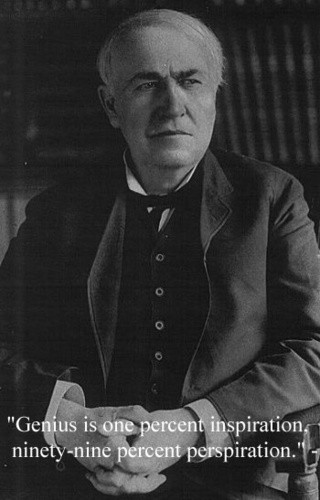Folks,
I attended Verdant's Occam Webinar yesterday. Verdant's Joe Fjelstad was the speaker. As the webinar began, I was reminded what a nice guy Joe is and it was clear he is very passionate about Occam. I also got the impression that the Verdant folks prime motive is to serve the electronics industry. This point came out in the apparent looseness of licensing terms for the technology in the presentation. Nice people those Verdant folks!
The webinar began with why Occam is needed and then a process overview was given. No new or detailed information was presented about the process that was not in the white paper. Some new application concepts were presented such as of stacking of components, use of flex circuits and discrete wiring.
One thing became clear in the presentation is that Verdant does not plan to implement Occam in the sense of delivering a "turn key solution," they expect others to do it. Joe even commented several times when asked, "How will you solve such and such challenge," that he had great faith that other talented people would be able to solve such and such problem. This situation goes to what I think is the greatest weakness of the concept, thinking that Occam can be accomplished with minor tweaks to mature processes. This belief is most evident on page 13 of the webinar slides, titled:
"The Occam Approach is Novel But Not the Technologies". This slide lists:
1. Encapsulants will be "off the shelf"
2. Vias will be made by laser or other methods and optical pattern recognition used
3. Additive plating is well established
Thomas Edison is reputed to have said that "genius is 1% inspiration and 99% perspiration." I think Occam has given us the 1%, the 99% that remains is a daunting task indeed. Producing 1000s of vias and additive plating at a line cycle time that is competitive to current assembly will be a world class challenge. The mature technologies referred to have only been used in situations dramatically different (such as small (PWB equivalent. It is hard to see the scale up required being simple.
Most surprising to me in the webinar, was the dismissal of rework. The conclusion seemed to be that with Occam it won't be needed, but if it is it can be done. No rework process was discussed, however. I beleive that if current assembly technology could not be reworked to replace bad components, electronics products would be noticably more expensive.
Joe also mentioned that Occam can handle a lot size of one. I asked about this claim in question 7 below. It is hard for me to see how this is easily possible, as a photolithography mask is needed to form the additive circuits.
At the end, the webinar attendees were asked to submit typed questions:
Me questions were:
1. Could you describe what the detailed process would look like for the optimum Occam product, including 1. The equipment and its cost in the assembly line 2. The target cycle time 3. A cost estimate comparing the Occam cost to a comparative cost for today's assembly processes.
If these questions aren't answered today, when will they be?
2. What about rework? Describe the process.
3. What is your target date for a turn-key process?
4. What about recycling? Isn't removal of components (by something like de-soldering) required? How will Occam do this?
5. What is the size of your development team? What are the level ($) of your resources to implement Occam?
6. How are the number of manufacturing steps reduced? Doesn't Occam need a full set of photolithography and additive plating processes for each circuit layer? For a greater than 4 layer process, this seems like a lot of manufacturing steps.
7. How do you do a lot size of one? Isn't a photomask needed for the photolithography/plating process?
Only question 6 was discussed (not really answered). Joe didn't address the point head on, but said there won't be a soldering process, so this makes Occam simple.
Another attendee asked what the target date was for the Occam process to produce a complex product. Joe spoke for several minutes, but no date was given.
To sum up my perspective at this point:
1. Occam is a concept, not a process
2. Occam's proponents suggest that mature technologies (via etch,encapsulation, additivie plate)and materials, can be used in a new way to revolutionize electronics. However, they have not thought the process through thoroughly enough to talk about cost, schedule and process details. Without the details, one doesn't really know what one has. With my experience in etching, additive plating and encapsulation, I beleive the Occam process will be too slow by factors of 10 to 100 to be viable from a cost perspective.
3. Disassembly for rework and recycling is important and cannot be easily done with Occam.
Cheers,
Dr. Ron


